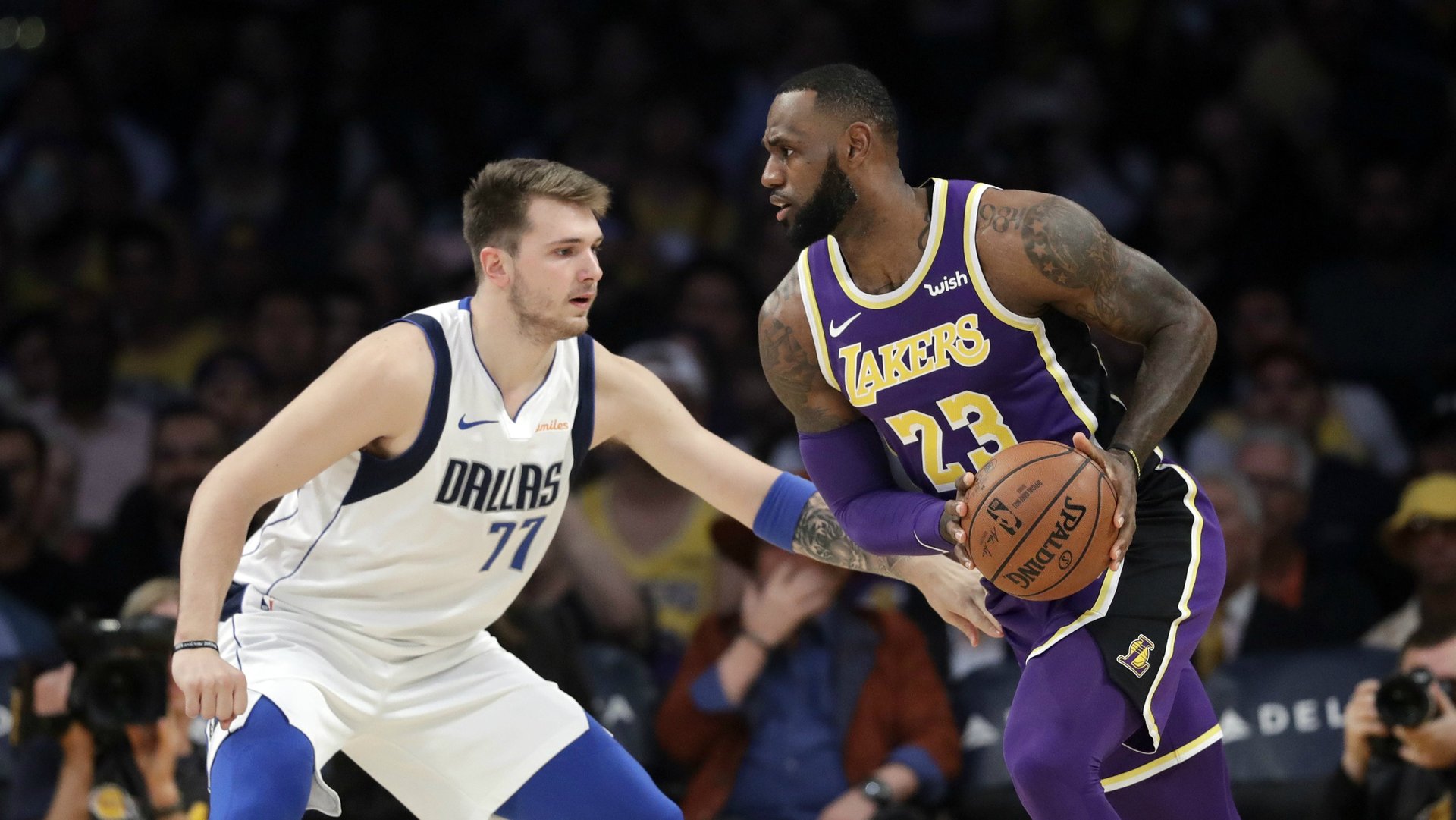“Halle-Luka”: The next LeBron James might be a Slovenian teenager
During a timeout in the second-quarter of the NBA game between the Dallas Mavericks and the Houston Rockets on Dec. 8, a singer played a song celebrating Mavericks’ rookie Luke Doncic. To the tune of Leonard Cohen’s “Hallelujah”, they praised the 19-year-old Slovenian’s skills on the court. “Halle-Luka,” the singer crooned.


During a timeout in the second-quarter of the NBA game between the Dallas Mavericks and the Houston Rockets on Dec. 8, a singer played a song celebrating Mavericks’ rookie Luke Doncic. To the tune of Leonard Cohen’s “Hallelujah”, they praised the 19-year-old Slovenian’s skills on the court. “Halle-Luka,” the singer crooned.
Doncic’s play has certainly been praiseworthy. His first 24 games suggest he might be the heir apparent to LeBron James, the game’s best player. At 6’7″ and 220 pounds, Doncic is nearly as physically imposing as the then 6’8″, 240-pound James was at 19. He is also leading the Mavericks to wins. At the time of writing, Doncic’s team is 14-11, far better than expected before the season started.
Doncic’s stats are also remarkably similar to James’s as a rookie. Through 24 games, Doncic has more points and rebounds per 36 minutes played, but slightly fewer assists.
Doncic arrived in Dallas this year after playing for four years for Real Madrid in Spain’s Liga ACB, the best basketball league in the world outside of the US. A prodigy, Doncic left Slovenia when he was only 13 to join Real Madrid, and was already a useful player by 16, competing against men twice his age. By 18, he was one of the best in Europe, and won the Spanish league’s most valuable player award.
Even given these accomplishments, Doncic was only picked third in the 2018 NBA draft—the Phoenix Suns and Sacramento Kings chose American-born players over him. The Atlanta Hawks also had the opportunity to draft him, but instead chose to trade their pick to the Mavericks. In hindsight, this looks like a bad decision.
Doncic is part of a cohort of young non-American players making a big splash in the NBA. Doncic, Giannis Antetokounmpo (Greece) of the Milwaukee Bucks, Joel Embiid (Cameroon) and Ben Simmons (Australia) of the Philadelphia 76ers are arguably the league’s four most promising players under the age of 25.
The NBA is increasingly popular around the world. NBA commissioner Adam Silver estimates that 1.4 billion people connect with the NBA in some way. It is the result of a long-term strategy by the league to build its brand outside North America by investing in international basketball training clinics and playing NBA games in China and Europe.
Foreign players now make up about 25% of all players, compared with just 5% in 1995. The US should get used to the idea that the next LeBron James—that is, the NBA’s next superstar—could come from outside the country where the sport was invented.